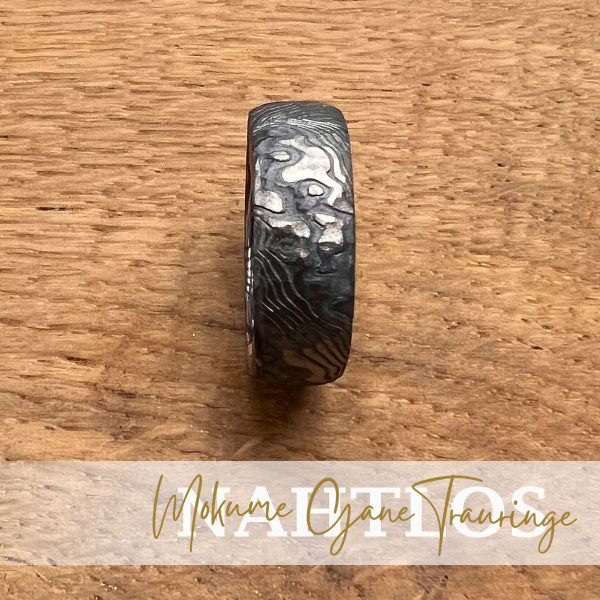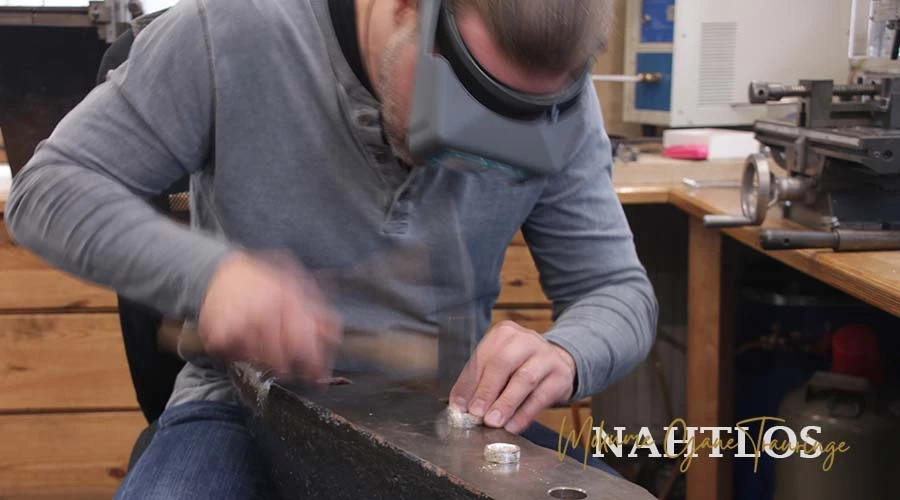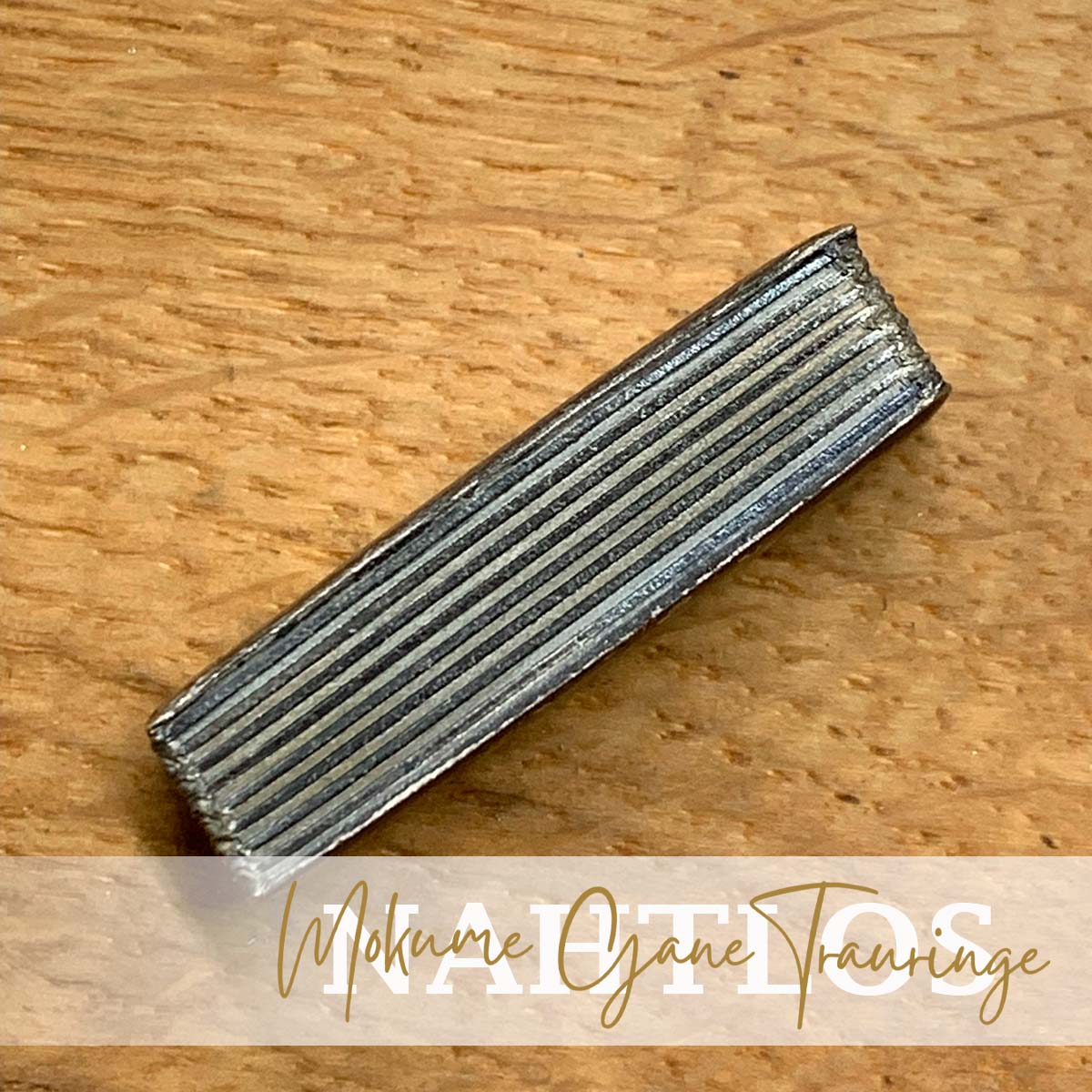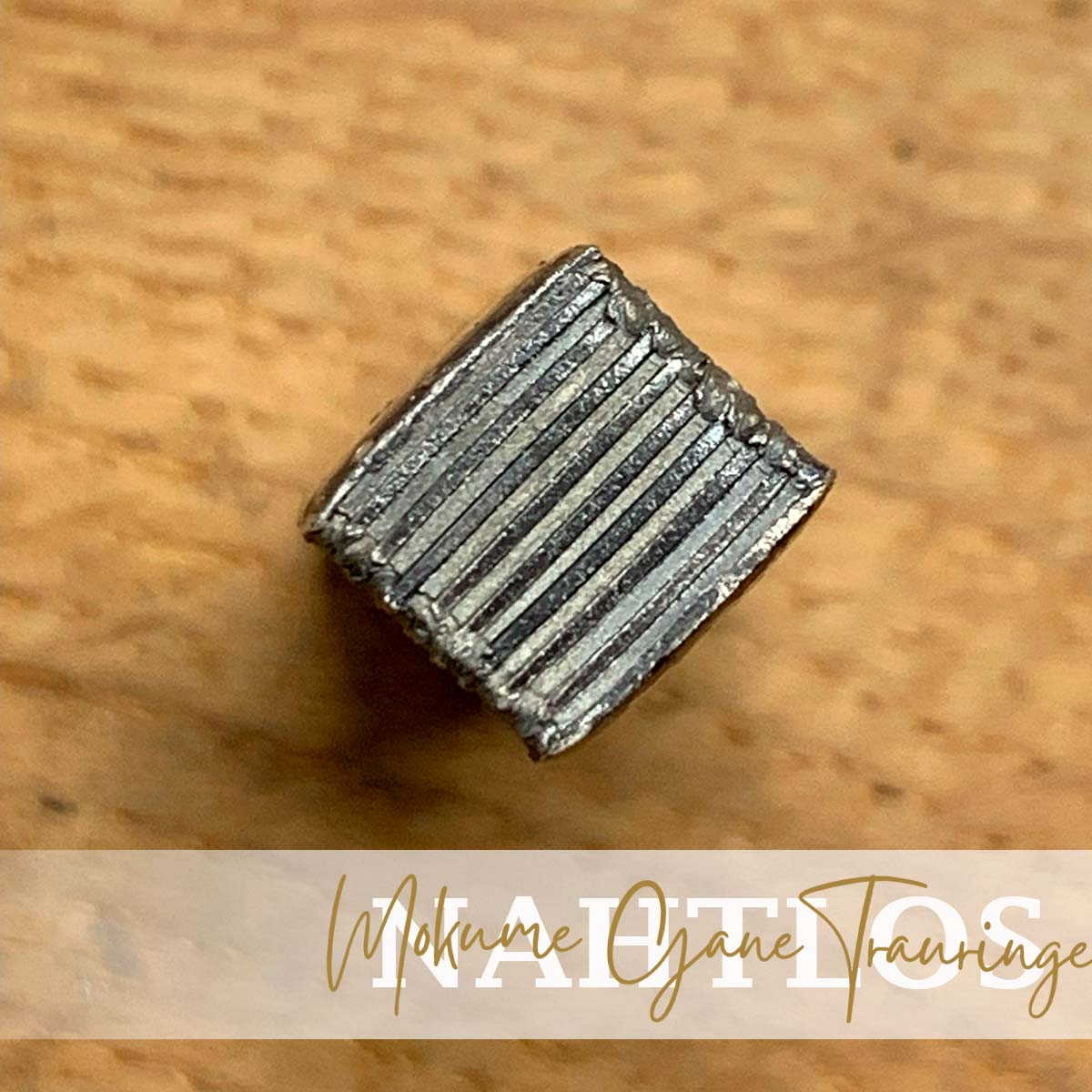A mokume gane ring in damask steel ring style is created - how does it work?
Master goldsmith Markus Wiesner starts today a Mokume Gane jewelry ring in damask steel look jewelry ring. We would like to show you how this is done with a small picture documentation. We cordially invite you to follow the individual steps of the forging process.
You are also welcome to share this short documentary with friends via social media.
Markus and Michael from "Wiesner - Die Goldschmiede" wish you lots of excitement and enjoyment as you look over their shoulders.
Markus Wiesner is currently forging your Mokume Gane wedding rings - Click on the picture to see more impressions from the workshop.
1) Palladium and silver layers were welded in the furnace
Beautifully welded Mokume Gane ingot made of palladium and silver sheets. After many hours in the furnace at a red-hot temperature, the layers of the two materials have bonded together at the grain boundaries. The result is a wafer-thin new alloy that is bonded to each of the two metals. After firing the mokume gane material, the black oxides, which are clearly visible here, almost suggest damascus steel. But it is not. These are high-quality precious metals. You will be surprised what happens next.
The ingot of the Mokume Gane ring "Iroko in damask steel look"looks quite impressive here in cross-section. At this stage, the whole thing is somewhat reminiscent of well-known cookies, which I will of course not mention by name here. :-)
2) Mokume Gane ingots forged and rolled
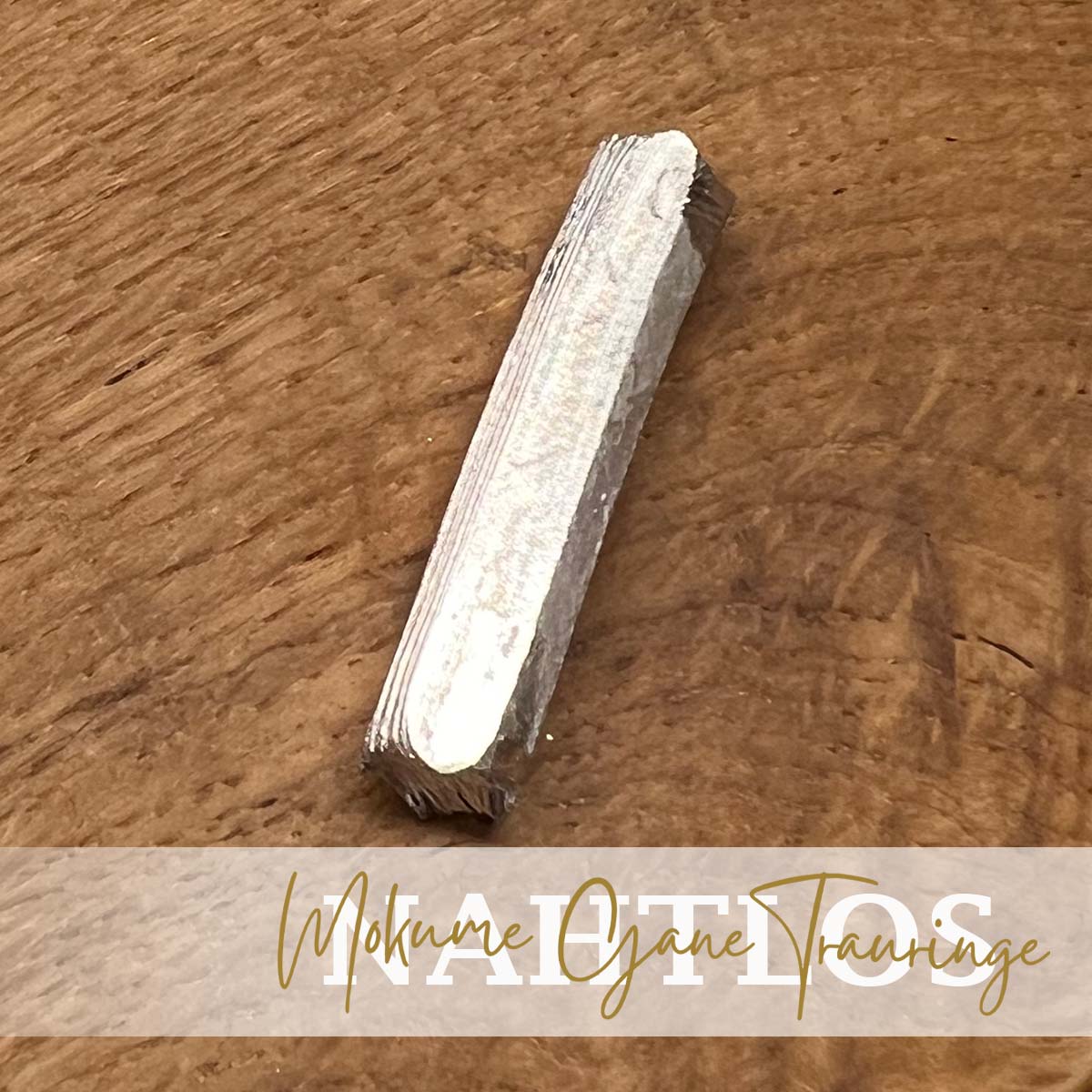
After welding, the process of forging and rolling begins. It has to reach the right thickness and length.
3) And the ingot slowly becomes a strand
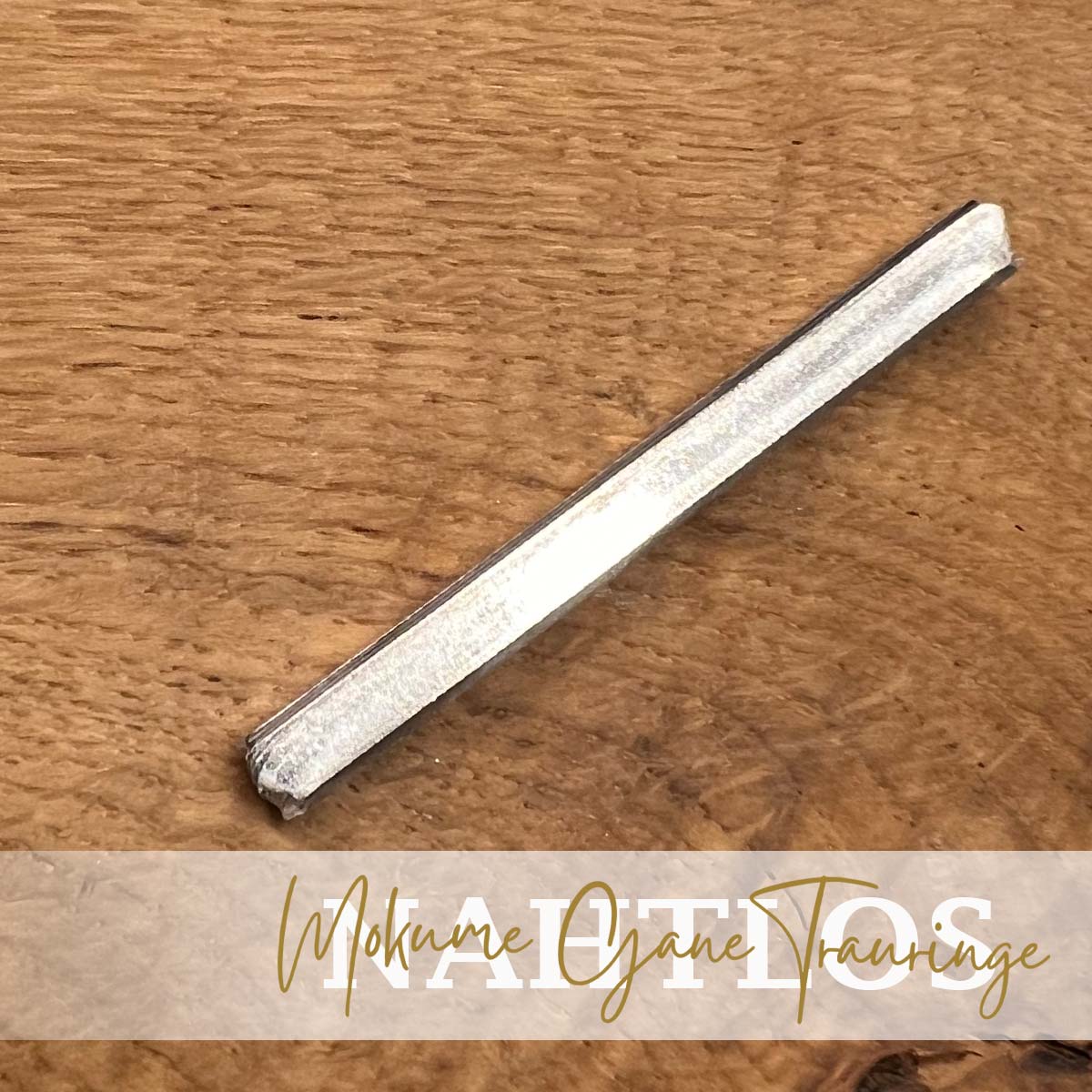
By alternating rolling and soft annealing, the mokume gane strand is brought to the correct length and cross-section.
4) And rolled a little longer
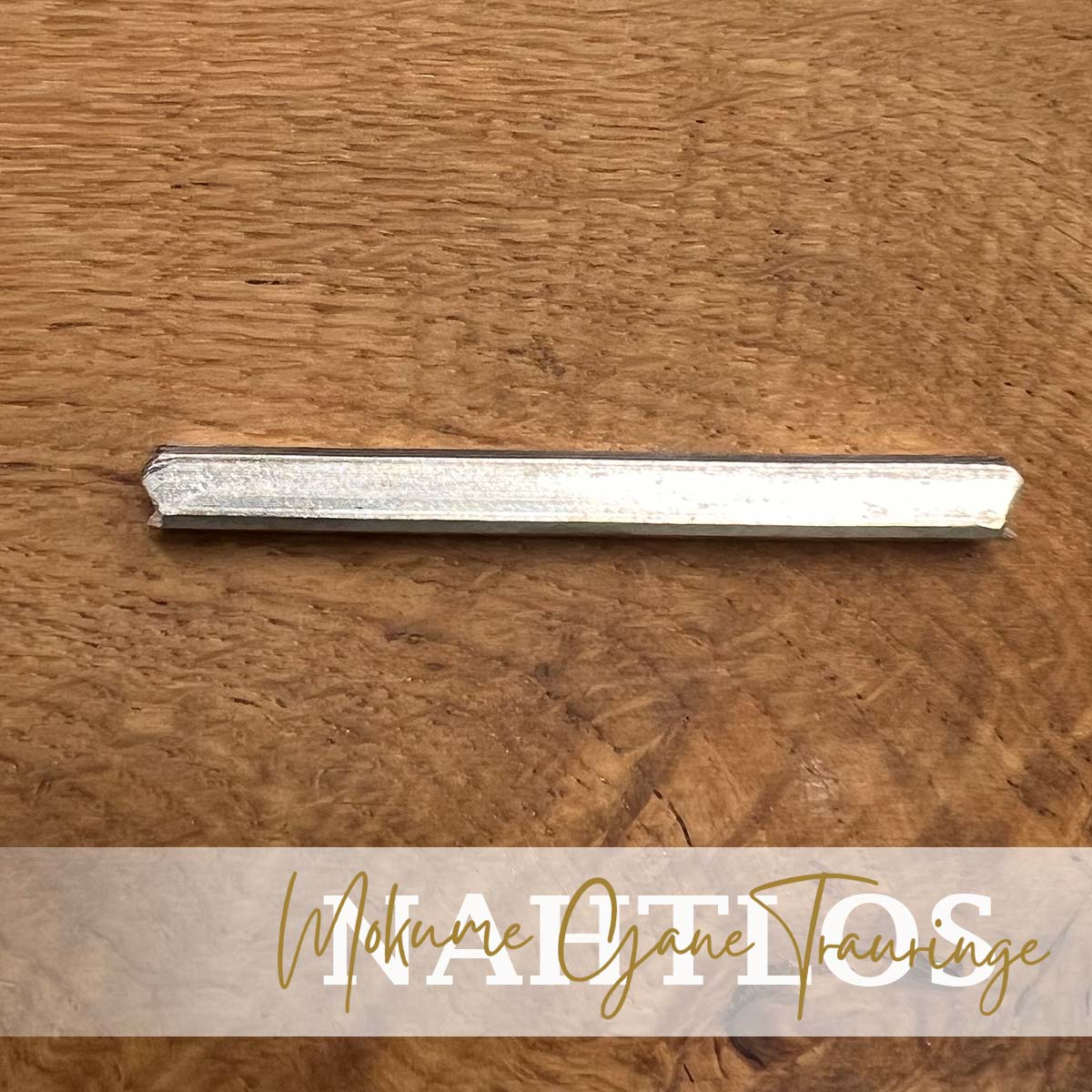
The mokume gane strand has now reached the desired length and the correct cross-section. The material is then sampled.
5) Torsion sampling process
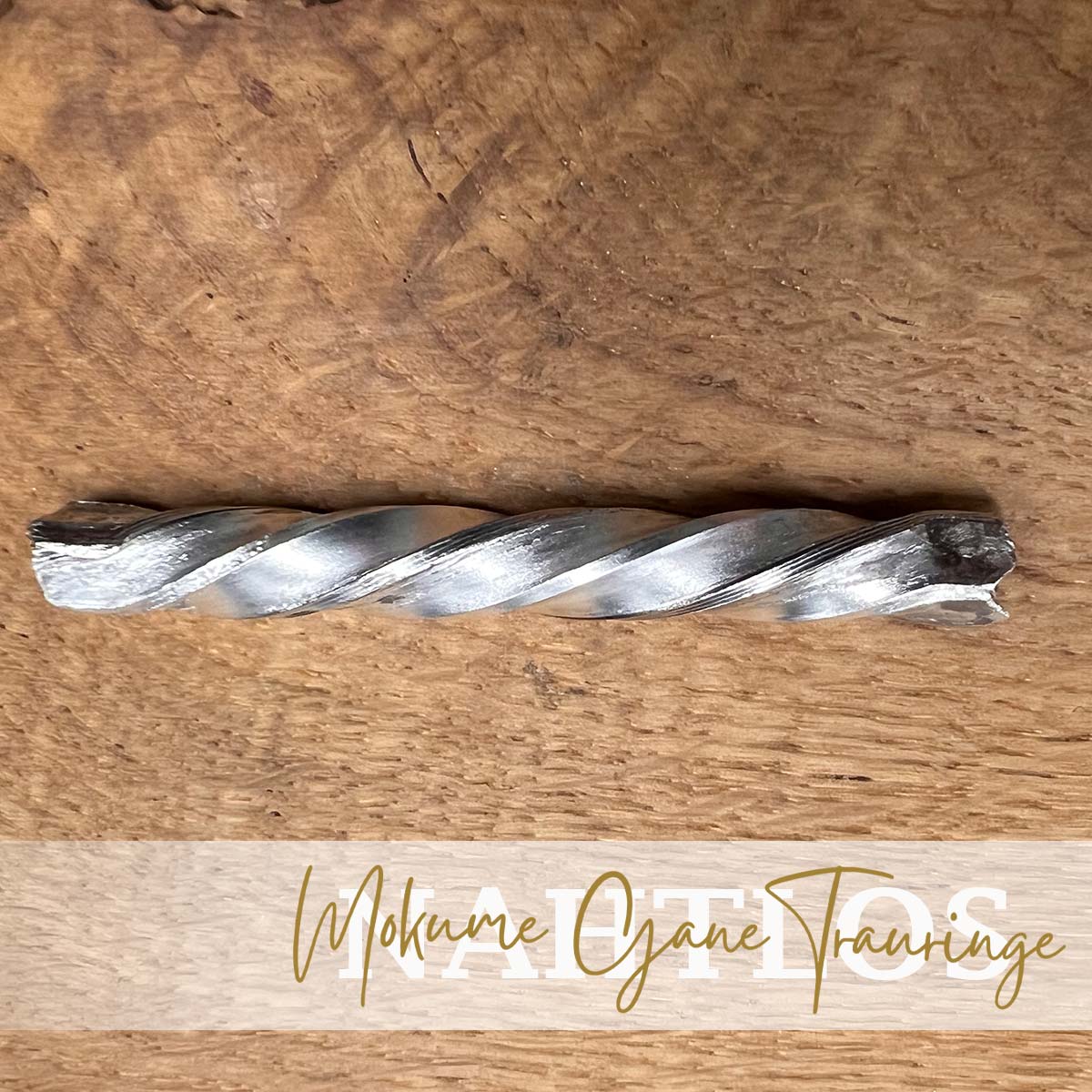
Torsion of the mokume gane strand lays the foundation for the subsequent pattern of the mokume gane ring.
6) The mokume gane strand is drilled and sawn
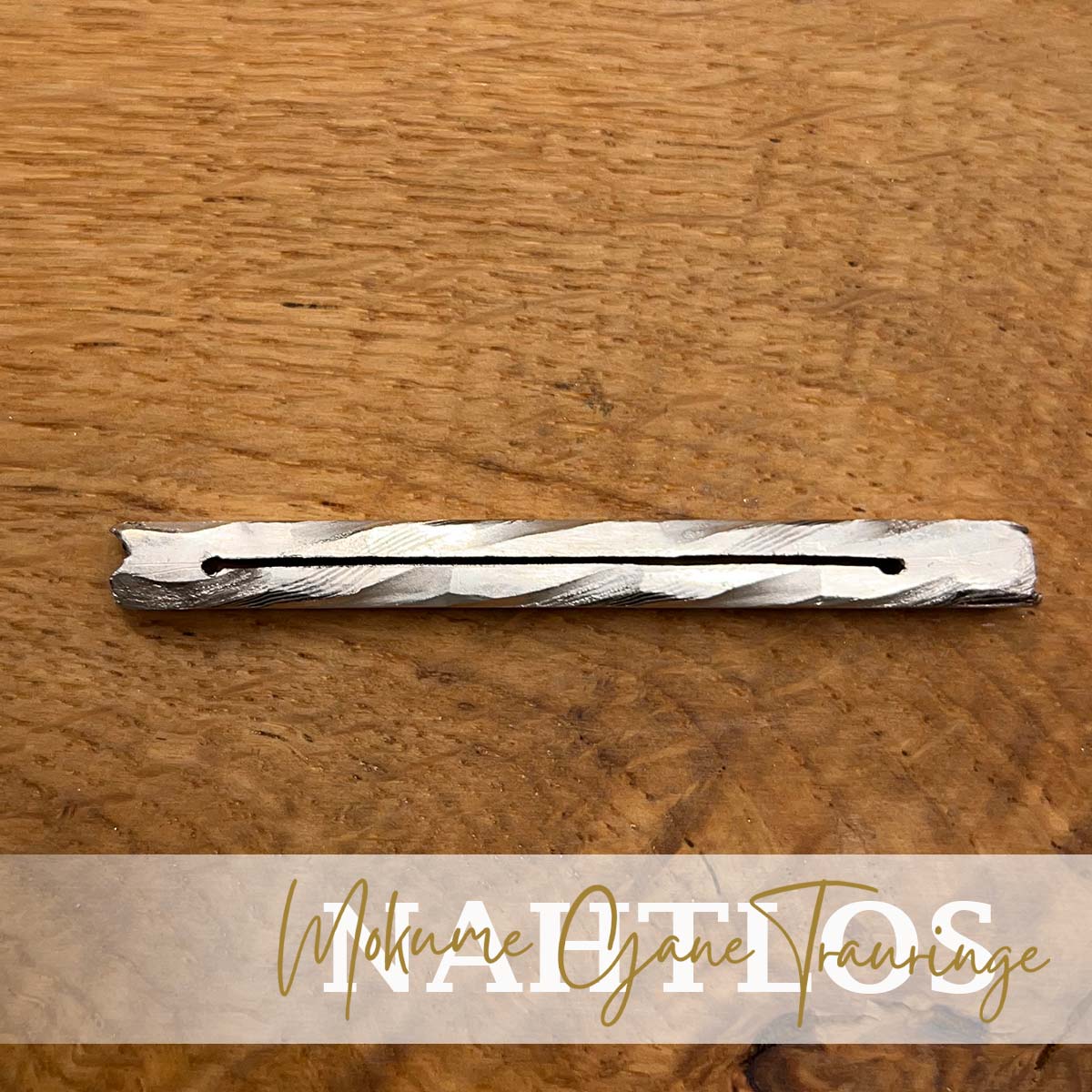
To create a NAHTLOS ring, it is necessary to splice the strand as shown above.
7) Spliced Mokume Gane strand, step 1
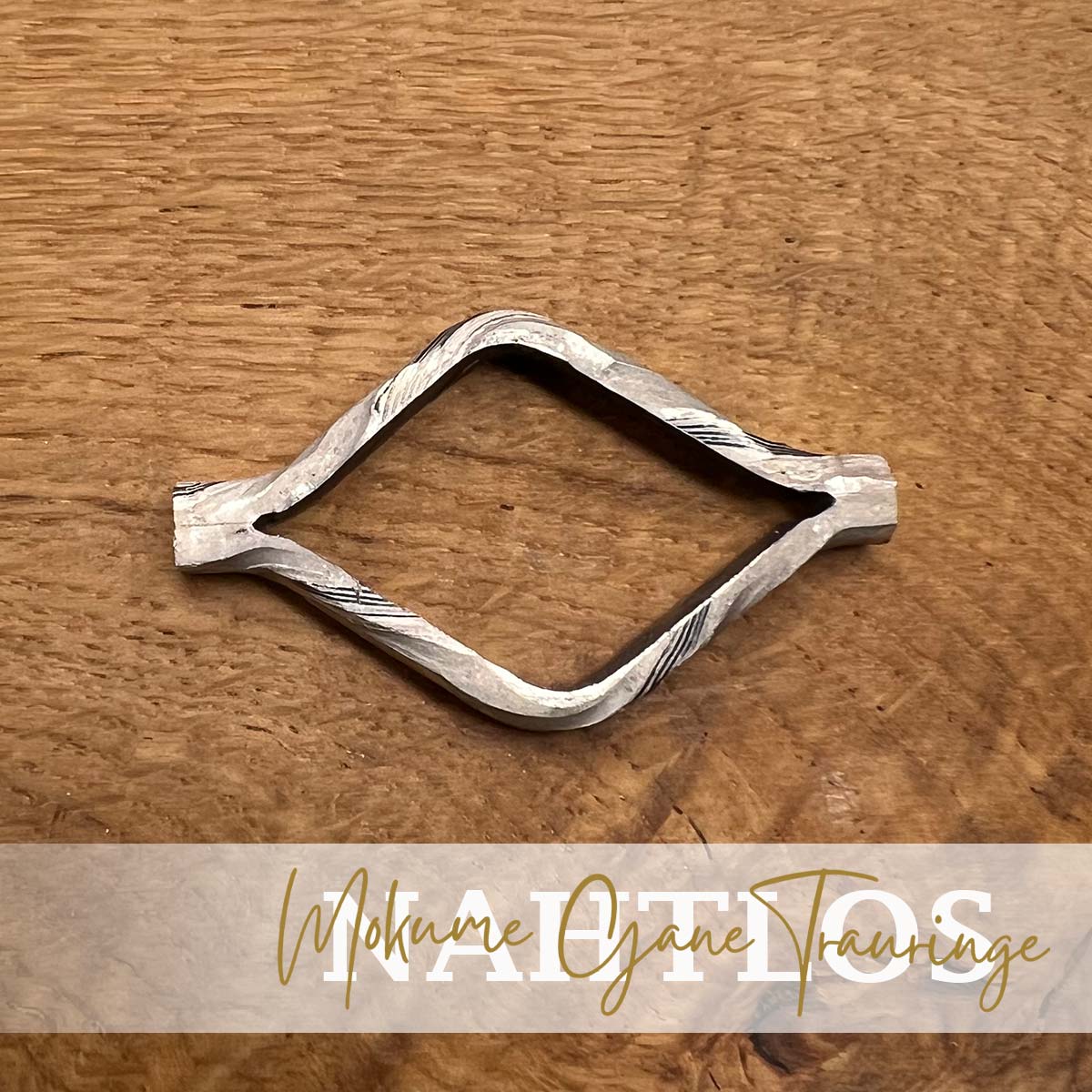
Here you can see very clearly what the material looks like after the first stretching step
8) The ring is gradually forged round on the ring bar
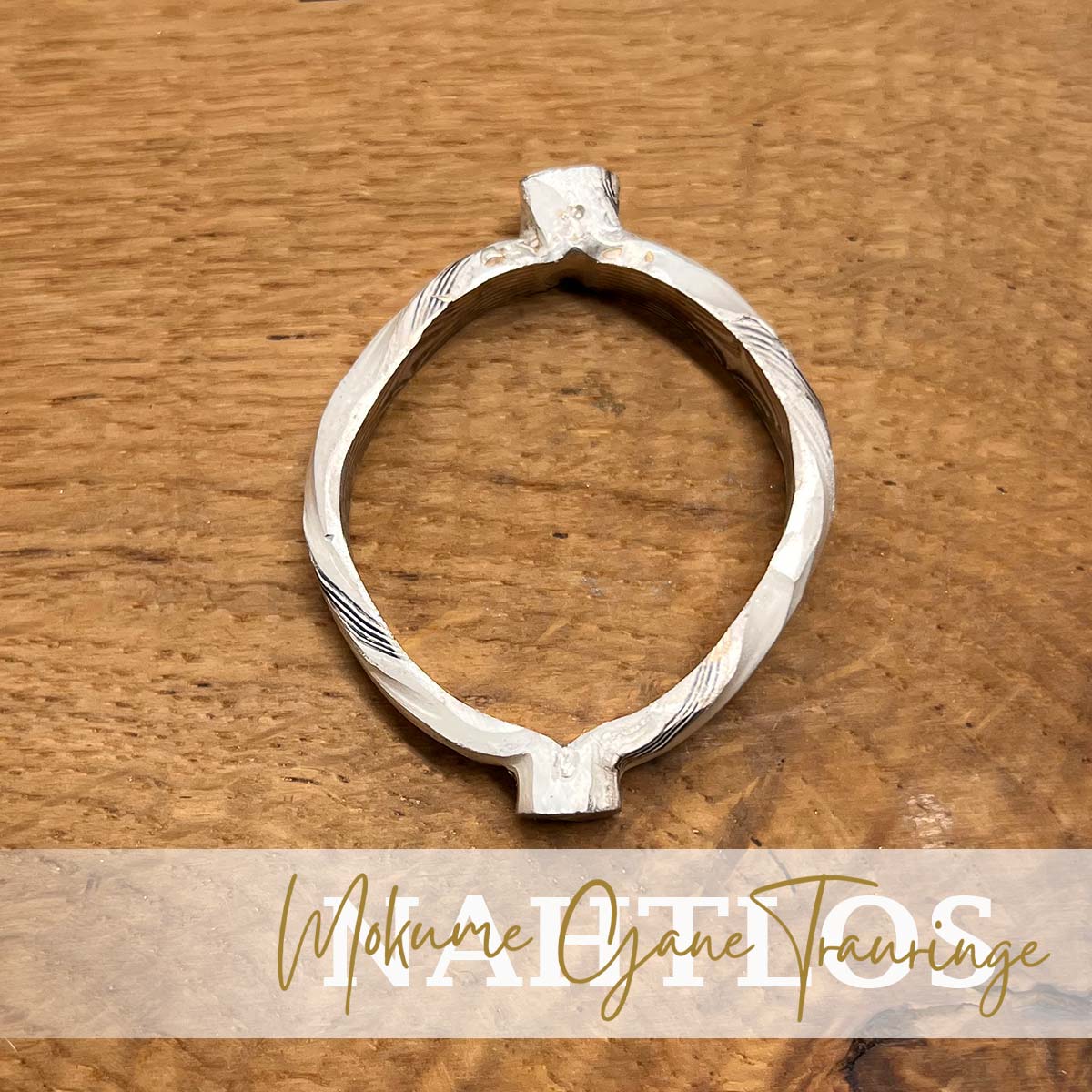
Step by step, the material is now forged round until only the small notches are visible on the inside
9) Forging the protrusions of the mokume gane ring
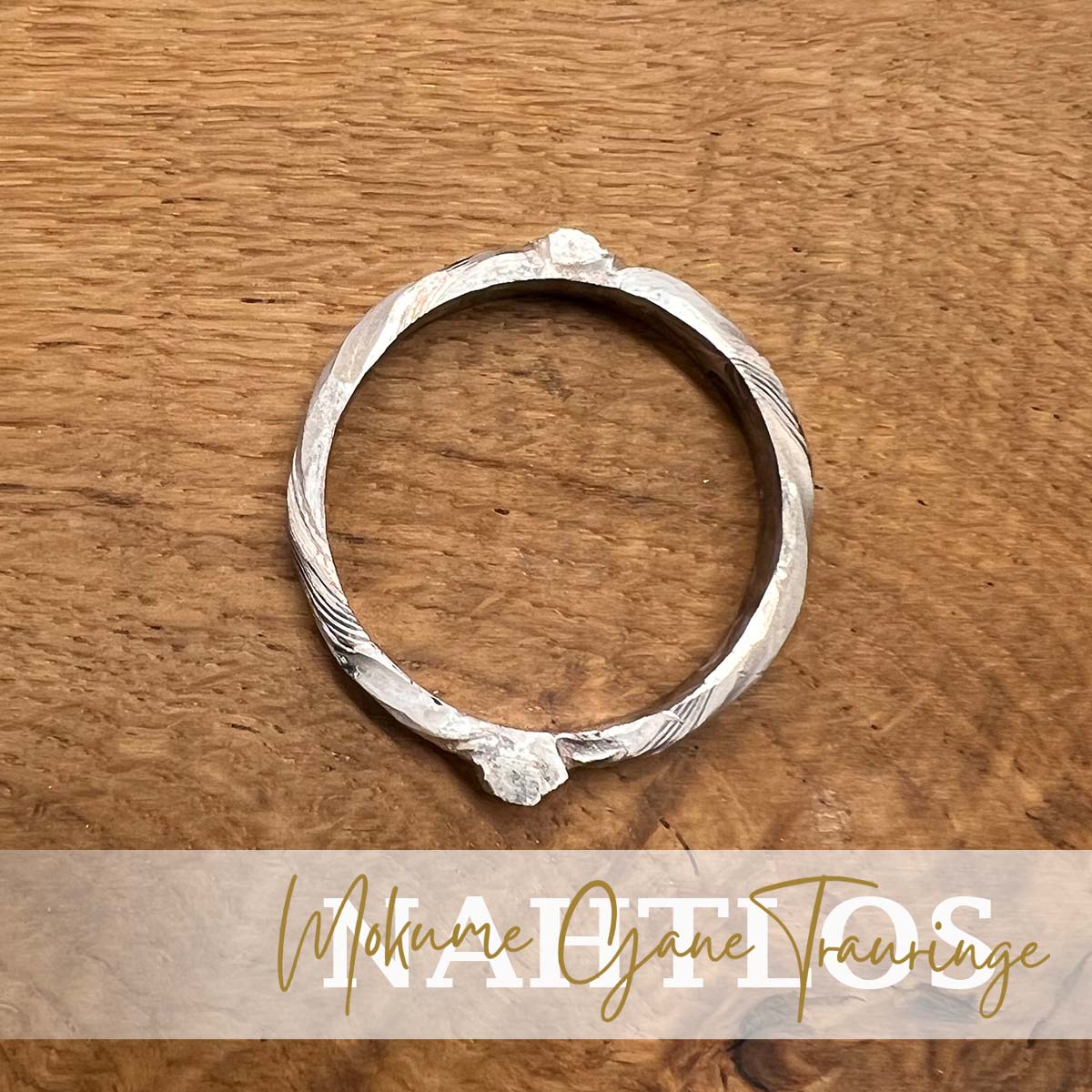
The inner notches are filled with the material, which is forged from the outside inwards.
10) Protrusions were milled off
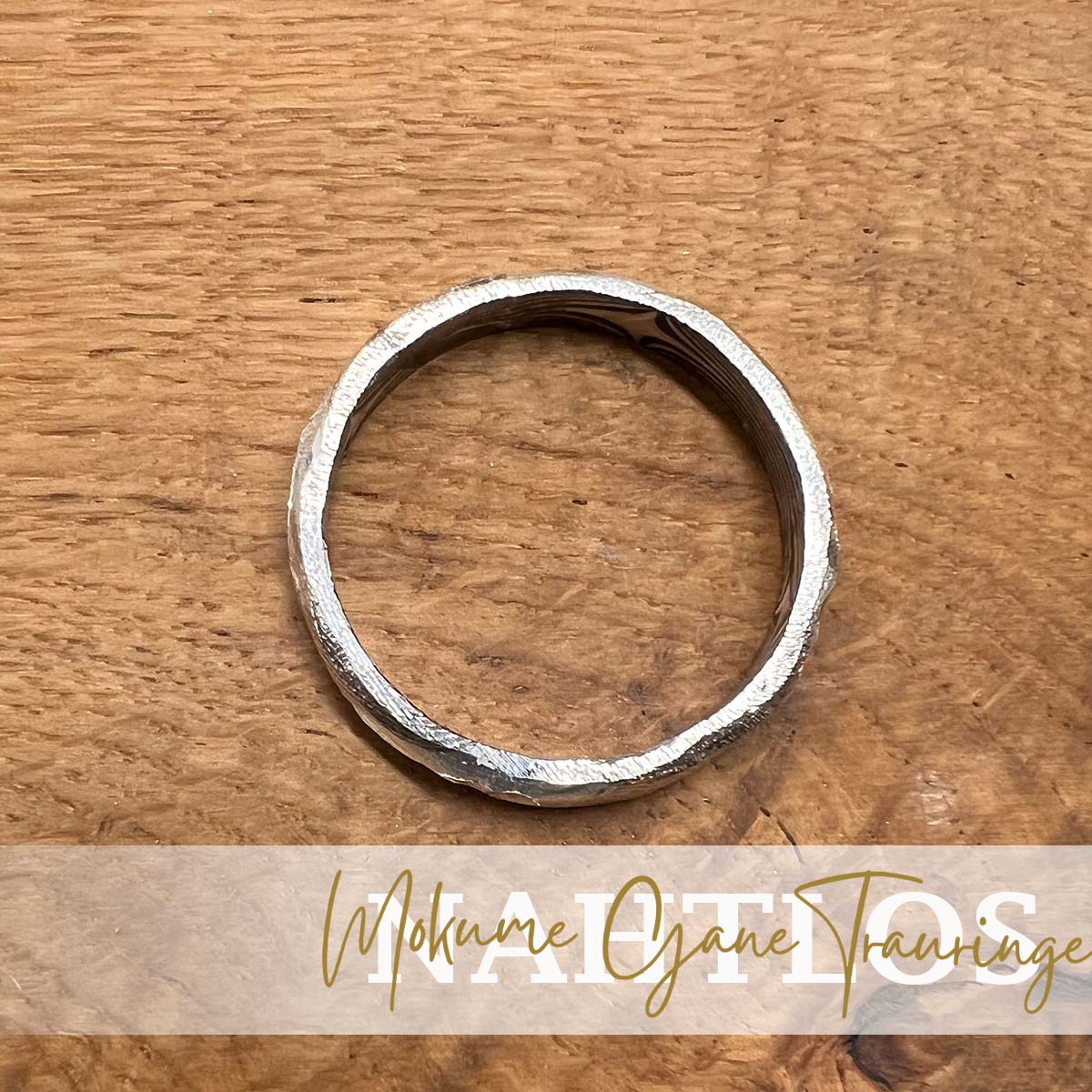
11) Further milling of the ring to make it as round as possible
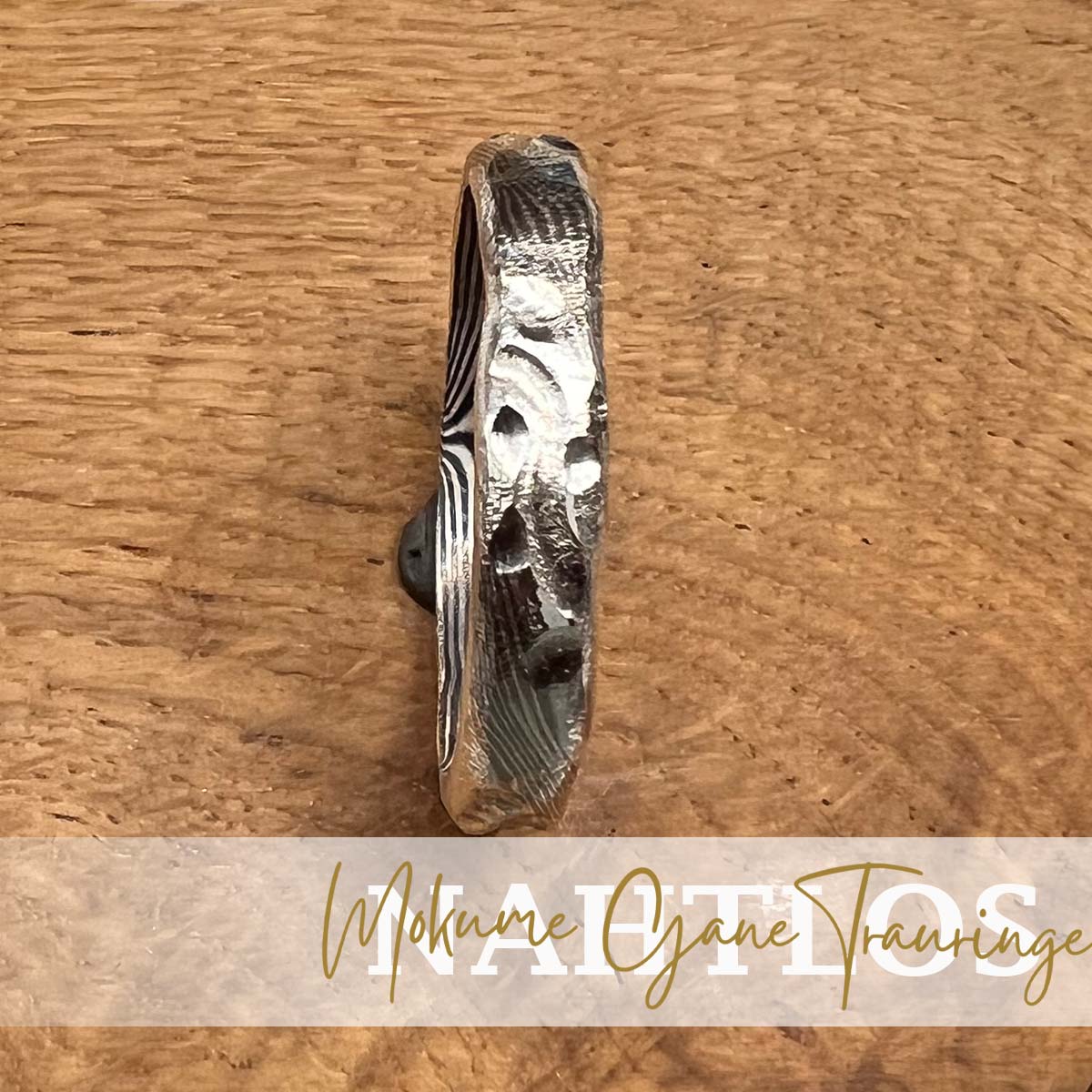
12) The mokume gane ring is now pressed smaller step by step
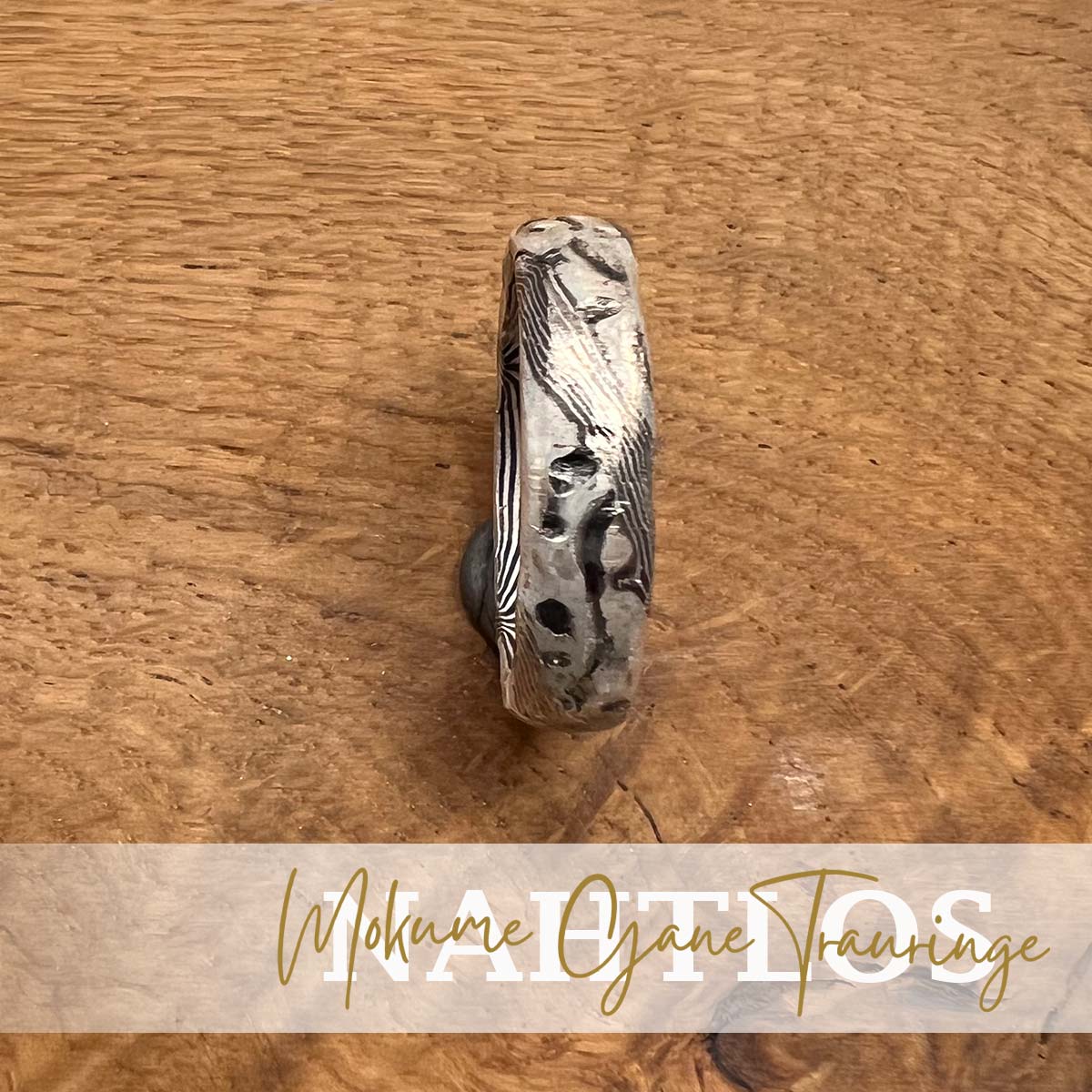
13) And even smaller
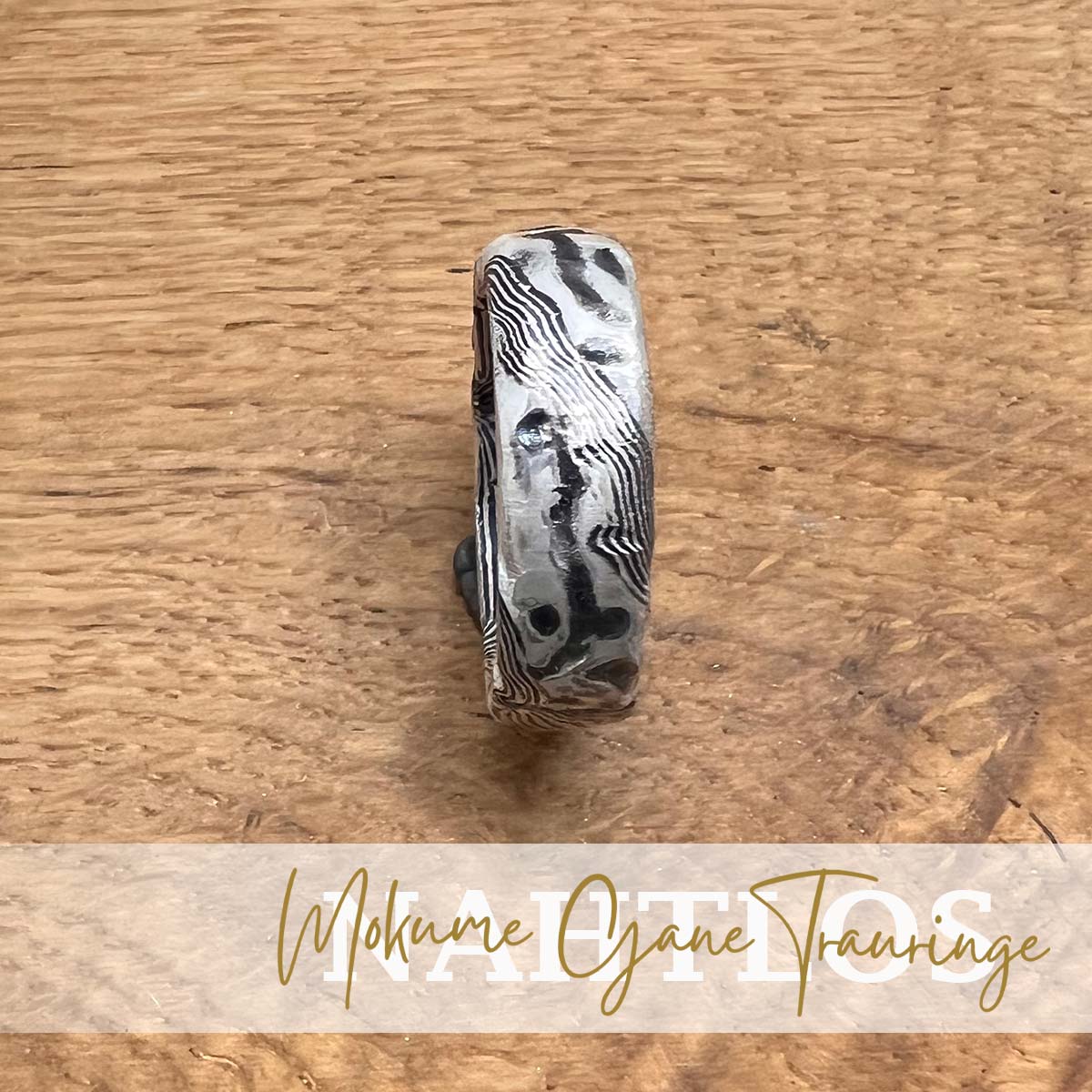
14) And even smaller
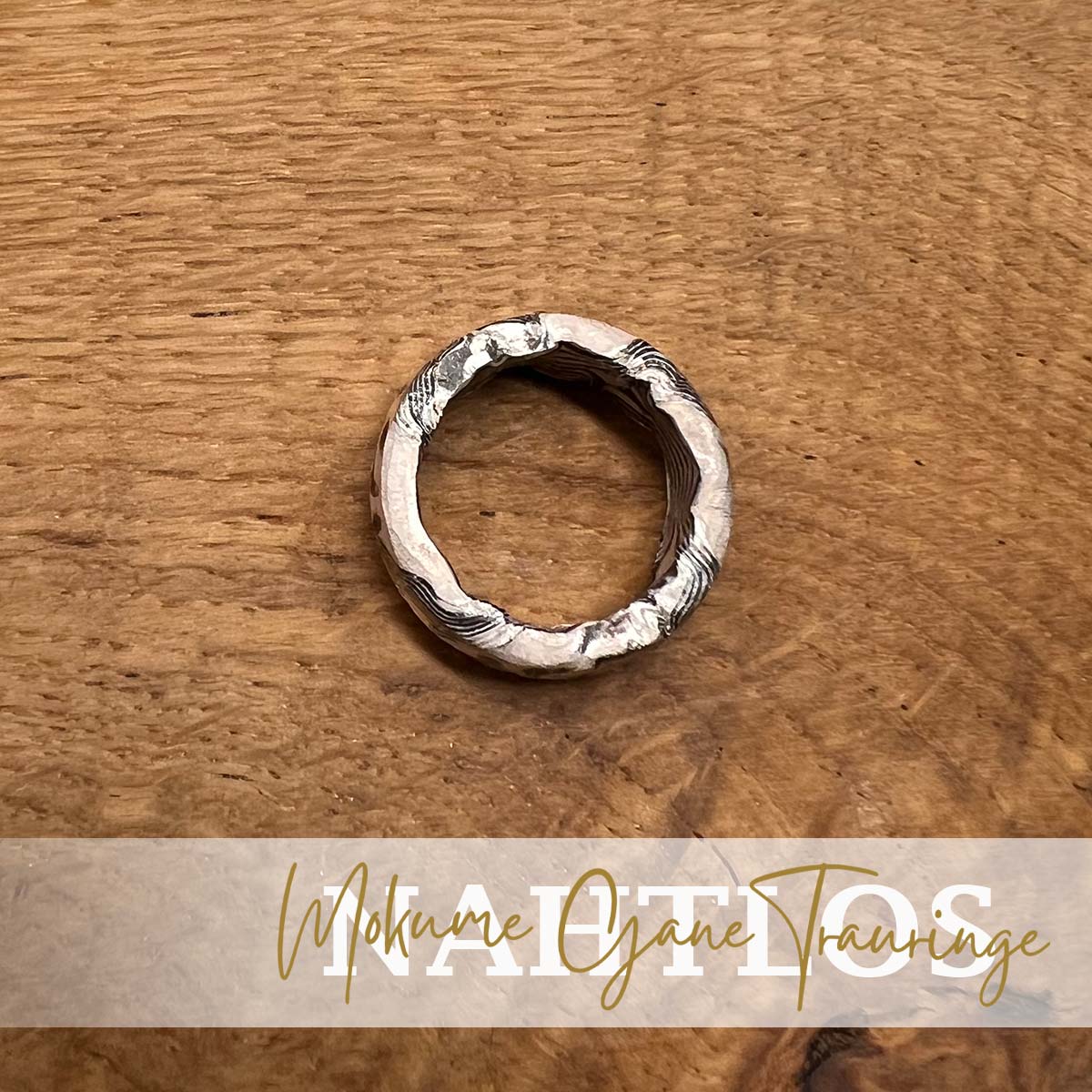
15) The mokume gane ring is soft annealed
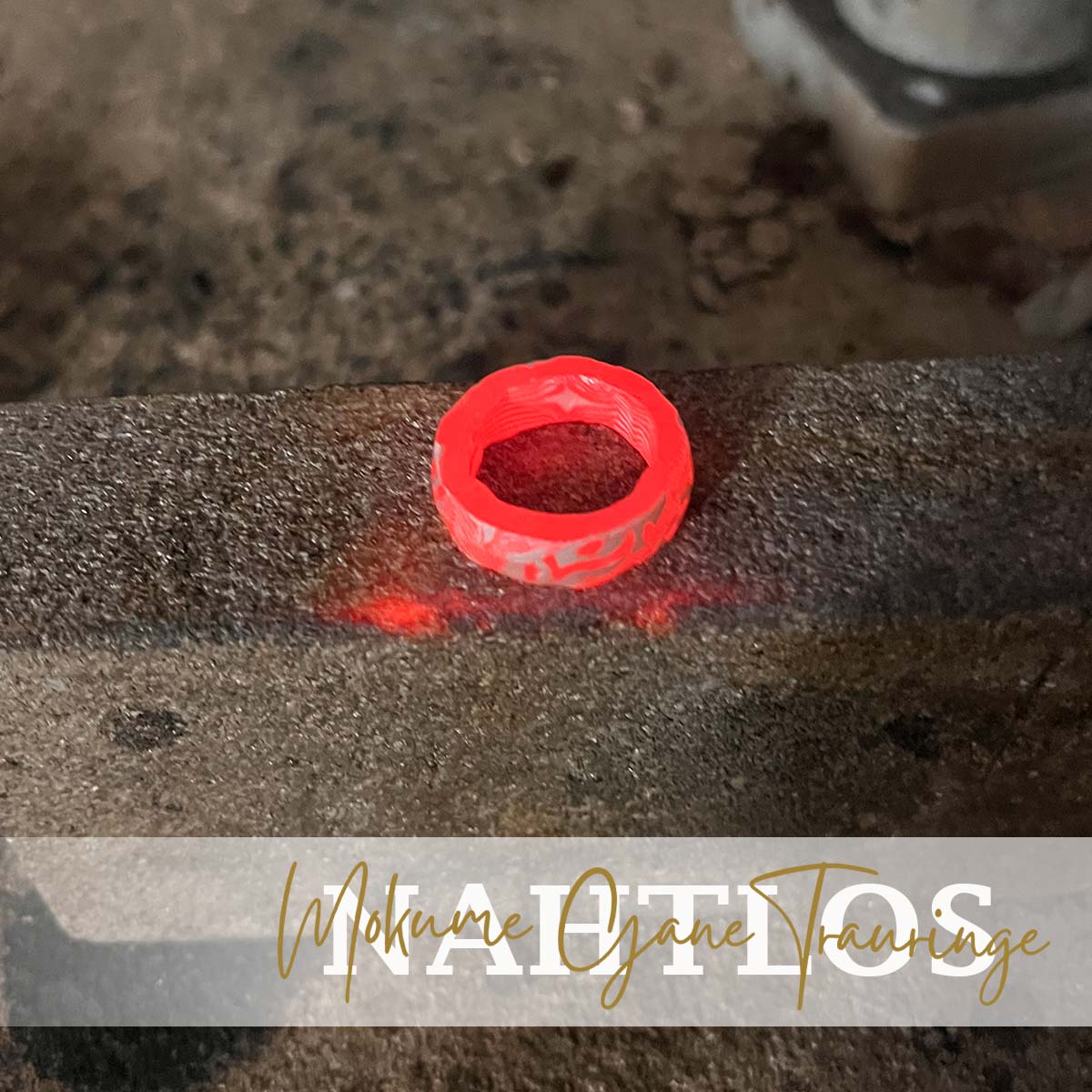
Between each step of the smaller pressing, the ring must be annealed so that the atomic lattices realign themselves and the precious metals recrystallize. Otherwise the material will tear in an uncontrolled manner.
16) Mokume Gane ring with oxide colors on the silver
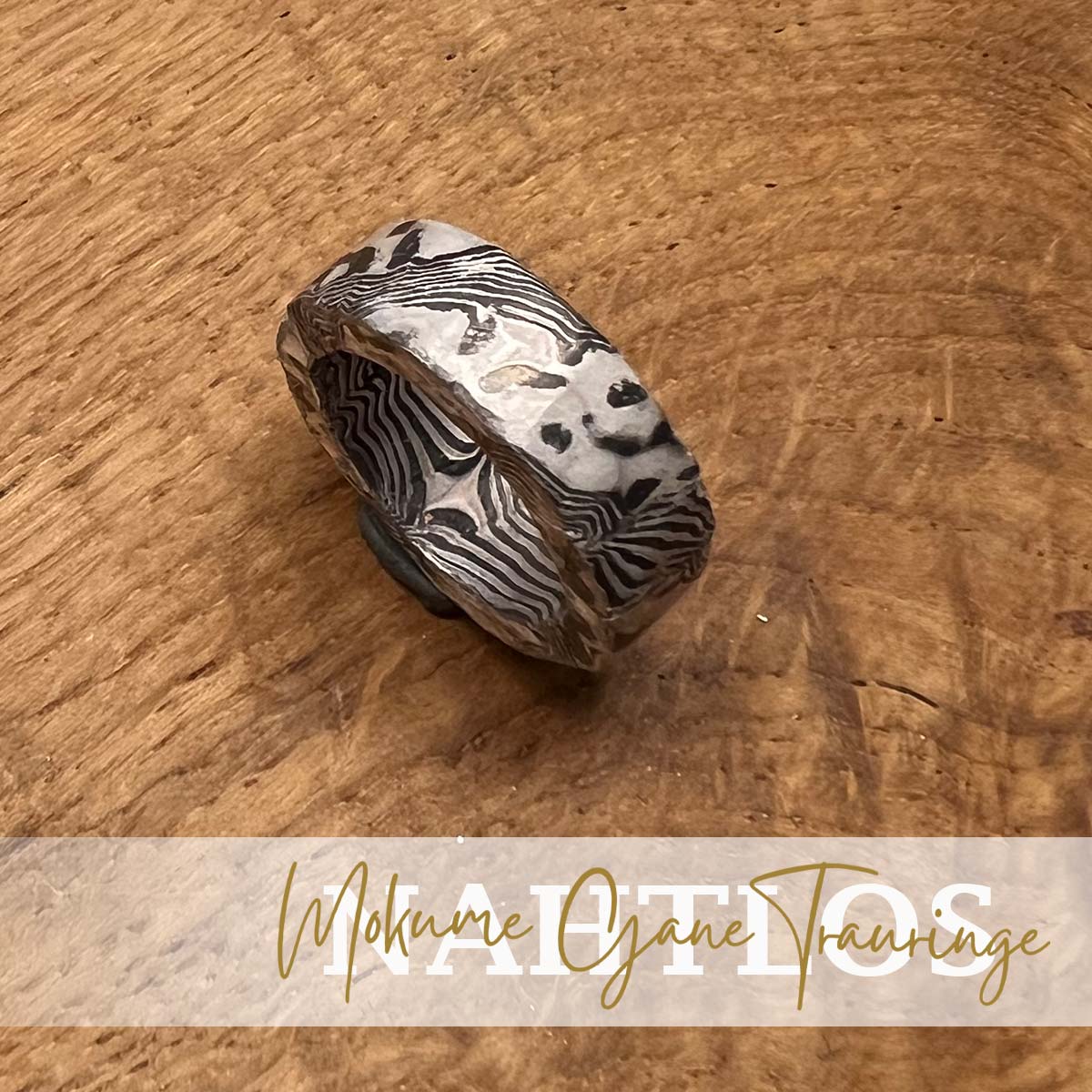
In this state, the ring could also be described as a finished design in its own right. However, the oxides wear off quickly so that the blackening is lost.
17) Almost finished Mokume Gane ring
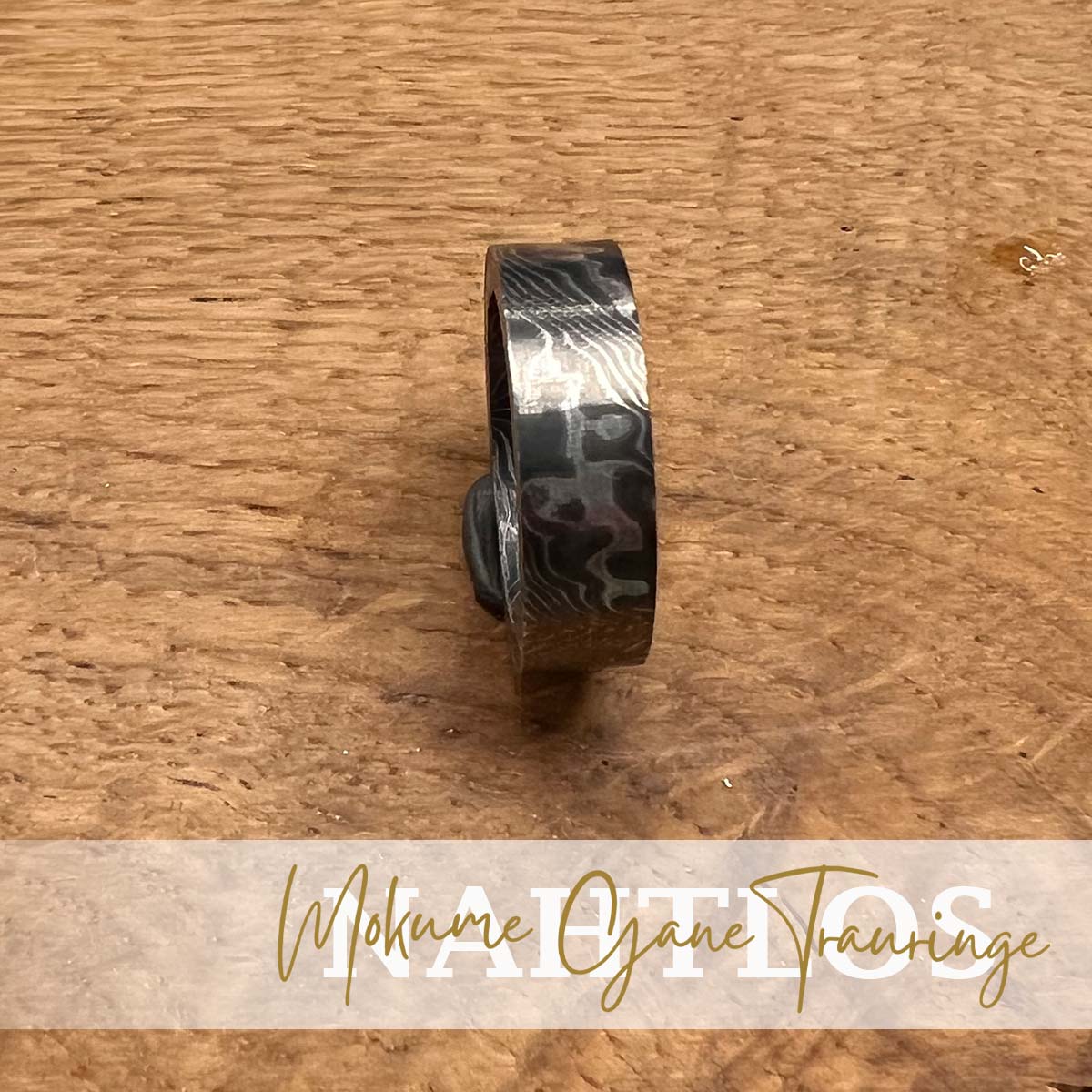
Up to this point, all the work was necessary to obtain a blank, which was then given the right profile and surface. With a single-colored, classic wedding ring, all the work steps up to this point would not be necessary. It would be produced by a CNC machine in the form shown above.
18) The mokume gane ring now has a damask ring style - #1
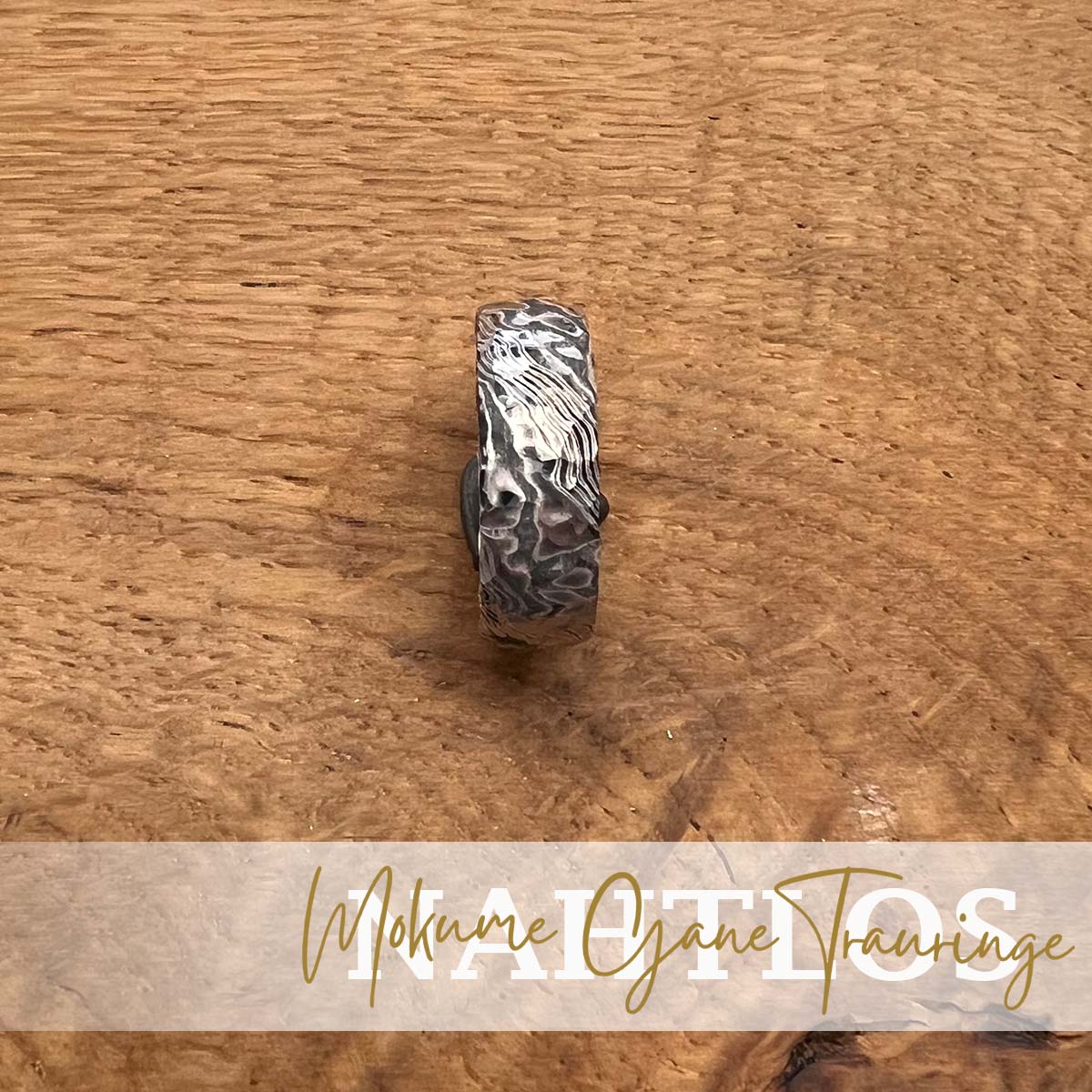
19) The Mokume Gane ring now gets a damask ring style - #2
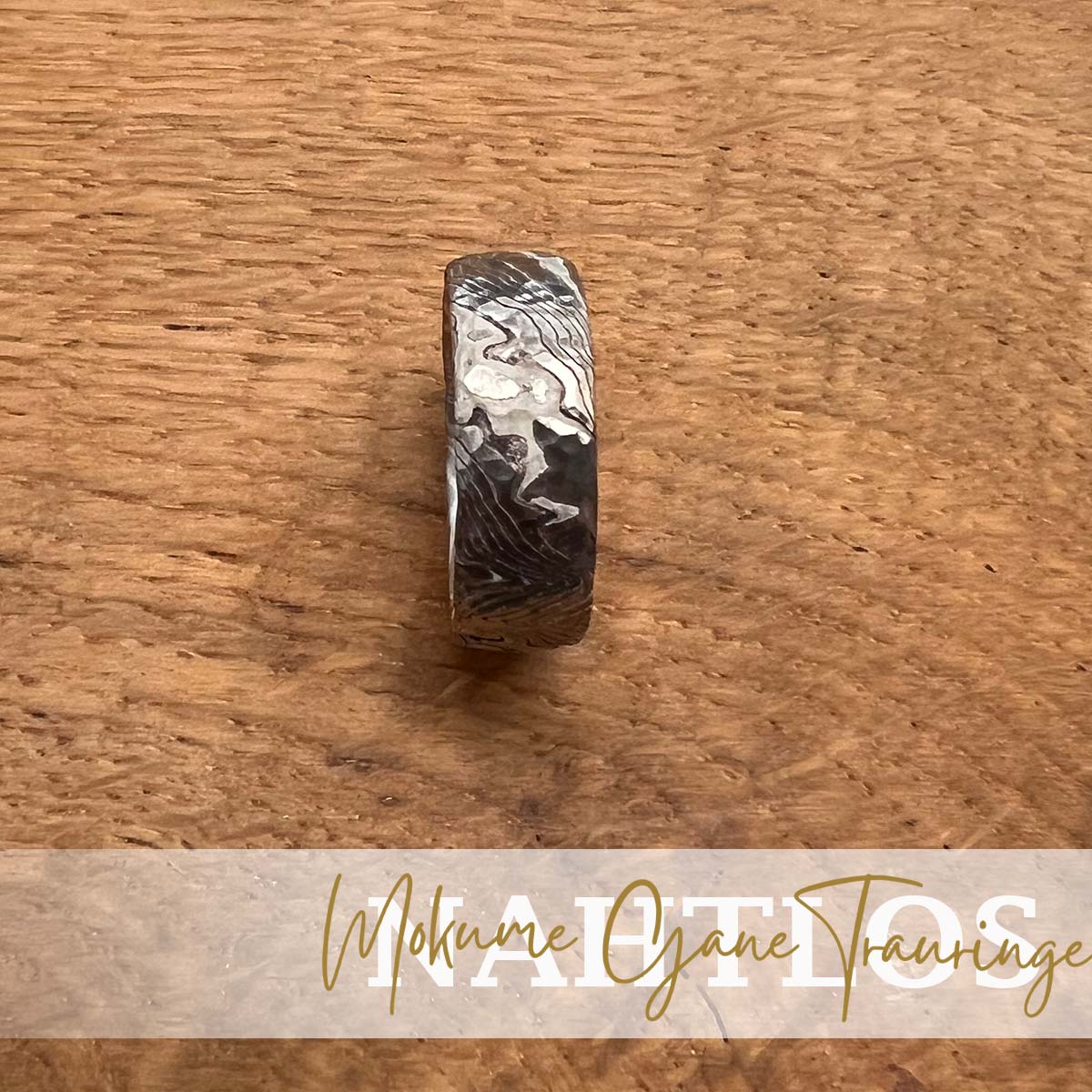
20) The Mokume Gane ring now gets a damask ring style - #3
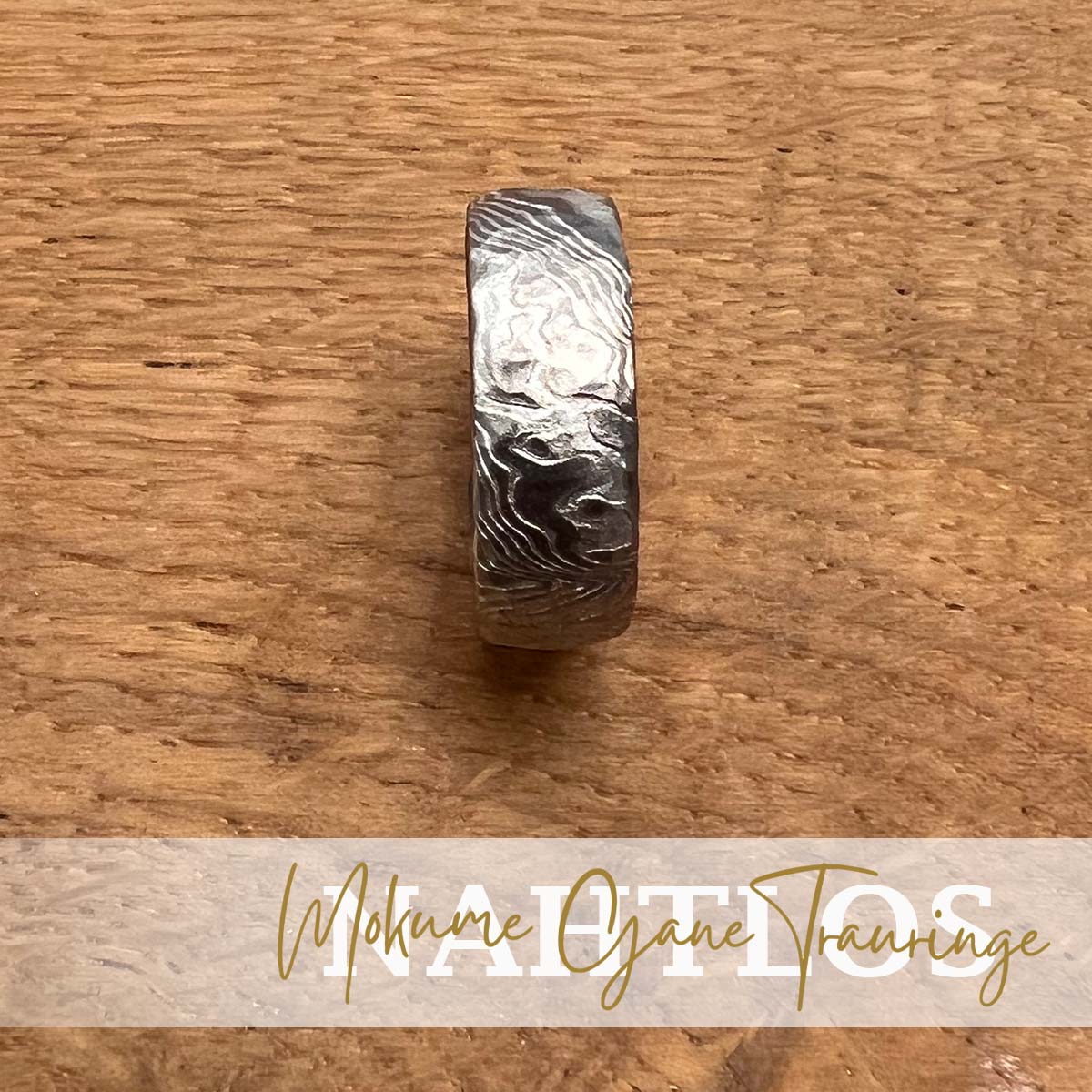
21) The Mokume Gane ring now gets a damask ring style - #4
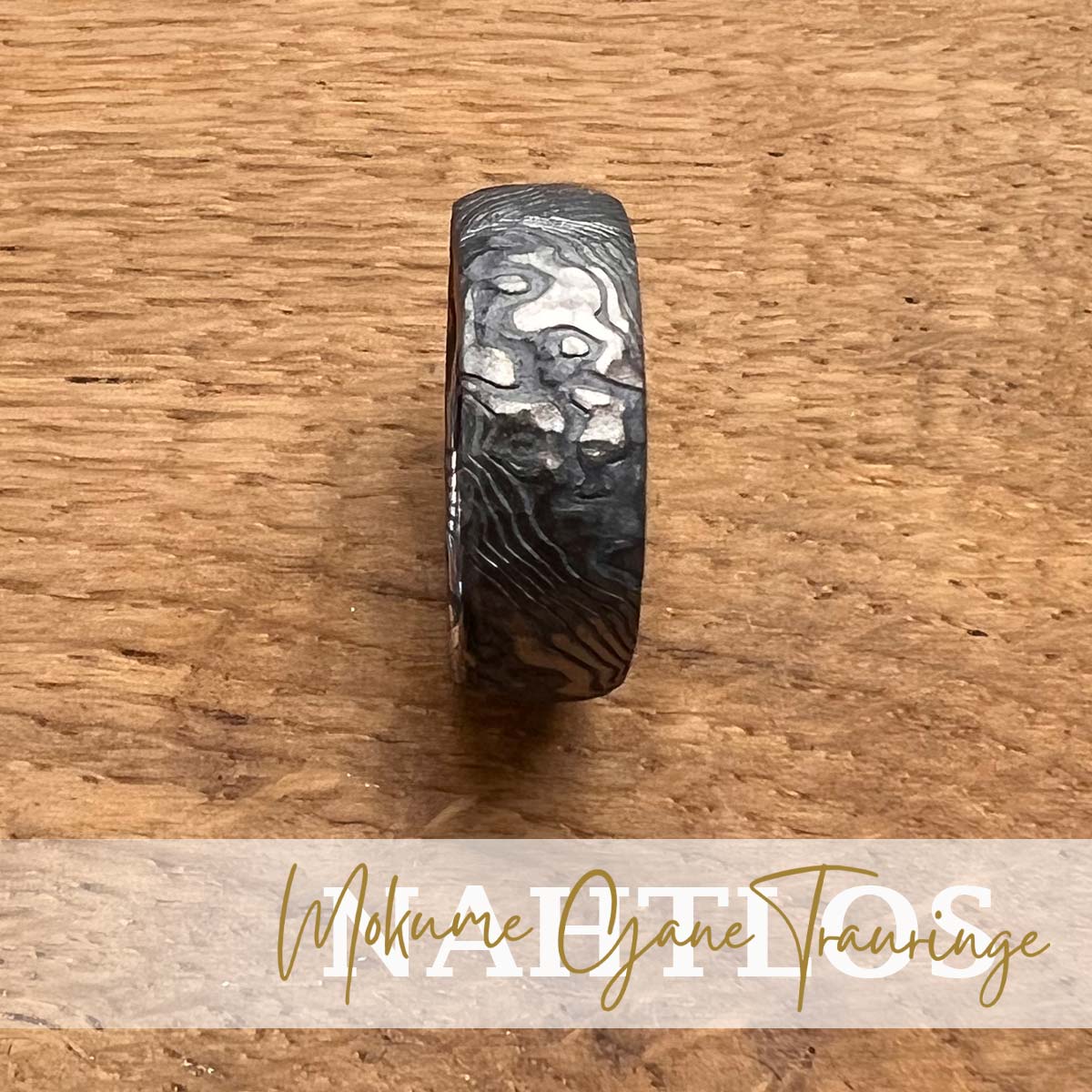
To give the Mokume Gane rings a damask ring style, the surface is designed with a forging hammer pattern. The deep etching of the silver makes it possible to give the silver parts of the ring a black color without it wearing off too quickly. In the depth of the 3D structure, the blackened surfaces experience very little abrasion. If the silver does become a little lighter, the blackening process can be repeated. For example, as part of the free reconditioning service that we offer our customers.

